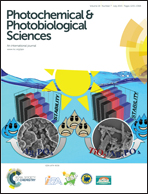Projected changes in erythemal and vitamin D effective irradiance over northern-hemisphere high latitudes
Abstract
Simulations of the monthly mean noon UV index and the effective dose for the production of vitamin D in the human skin have been performed for local noon for the latitude band 55°N–85°N using a radiative transfer model. The magnitude and spatial distribution of the changes estimated for the two quantities between the past (1955–1965 mean), the present (2010–2020 mean) and the future (2085–2095 mean) are discussed and the main drivers for these changes are identified. The irradiance simulations are based on simulations and projections of total ozone, surface reflectivity and aerosol optical depth derived from models used in the fifth phase of the Coupled Model Intercomparison Project (CMIP-5). The cloud modification factor is also derived from the CMIP-5 models and used to account for the effects of cloudiness. Simulations have been derived for two socioeconomic scenarios: the moderate RCP 4.5 and the extreme RCP 8.5. For the future, the two quantities are projected to be generally lower than in the past and the present, mainly due to the projected super-recovery of stratospheric ozone and reduced surface reflectivity. Although the greatest changes are projected over the Arctic Ocean and do not directly affect humans, the changes over land are also important. Over land, the greatest changes are found in northern Asia, Greenland and the north-east shores of Canada and Alaska. The greatest reductions over land are projected for April under all skies, locally reaching ∼30% for the noon UV index and ∼50% for the noon effective UV dose for the production of vitamin D.


 Please wait while we load your content...
Please wait while we load your content...